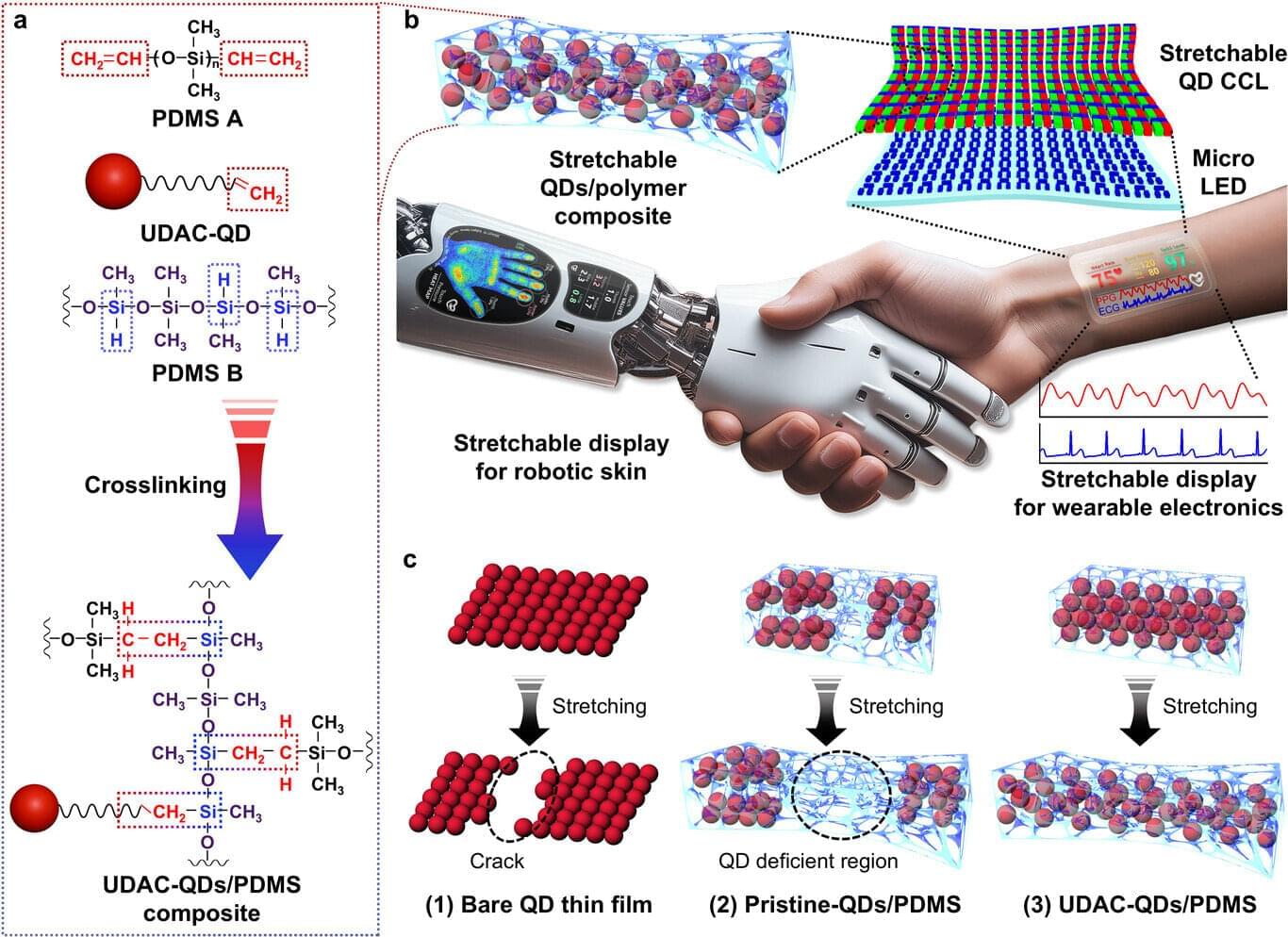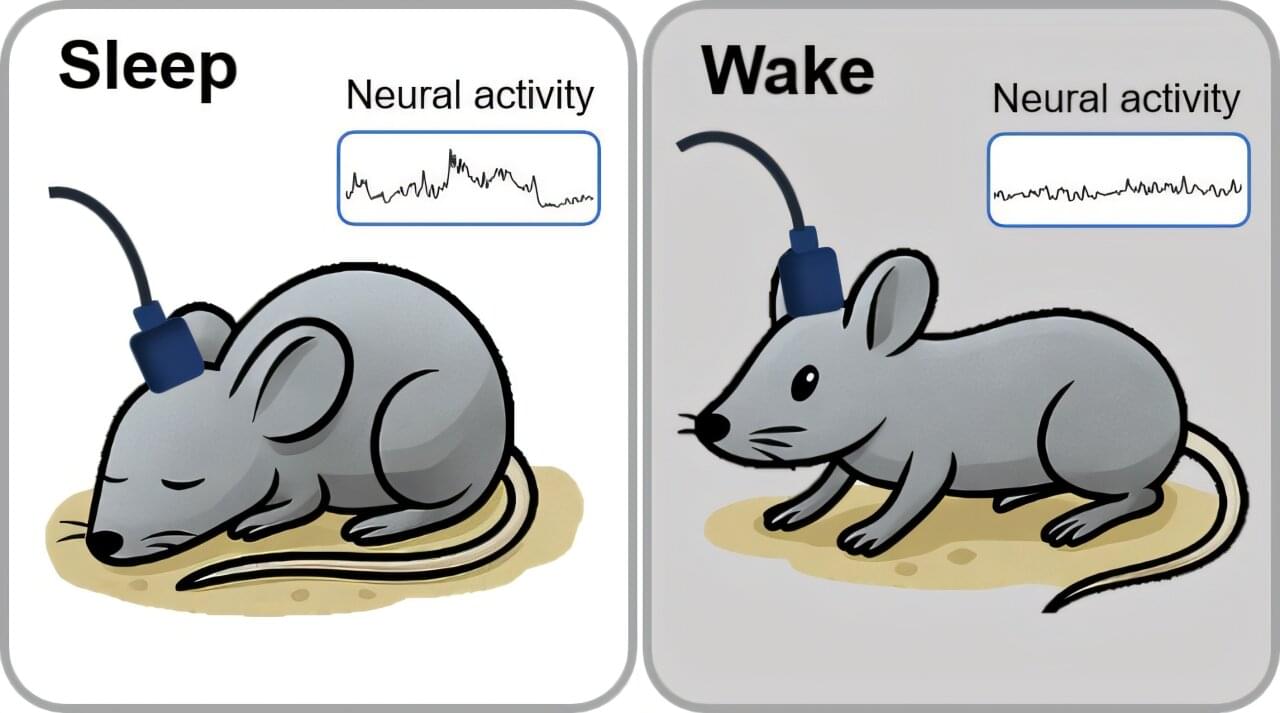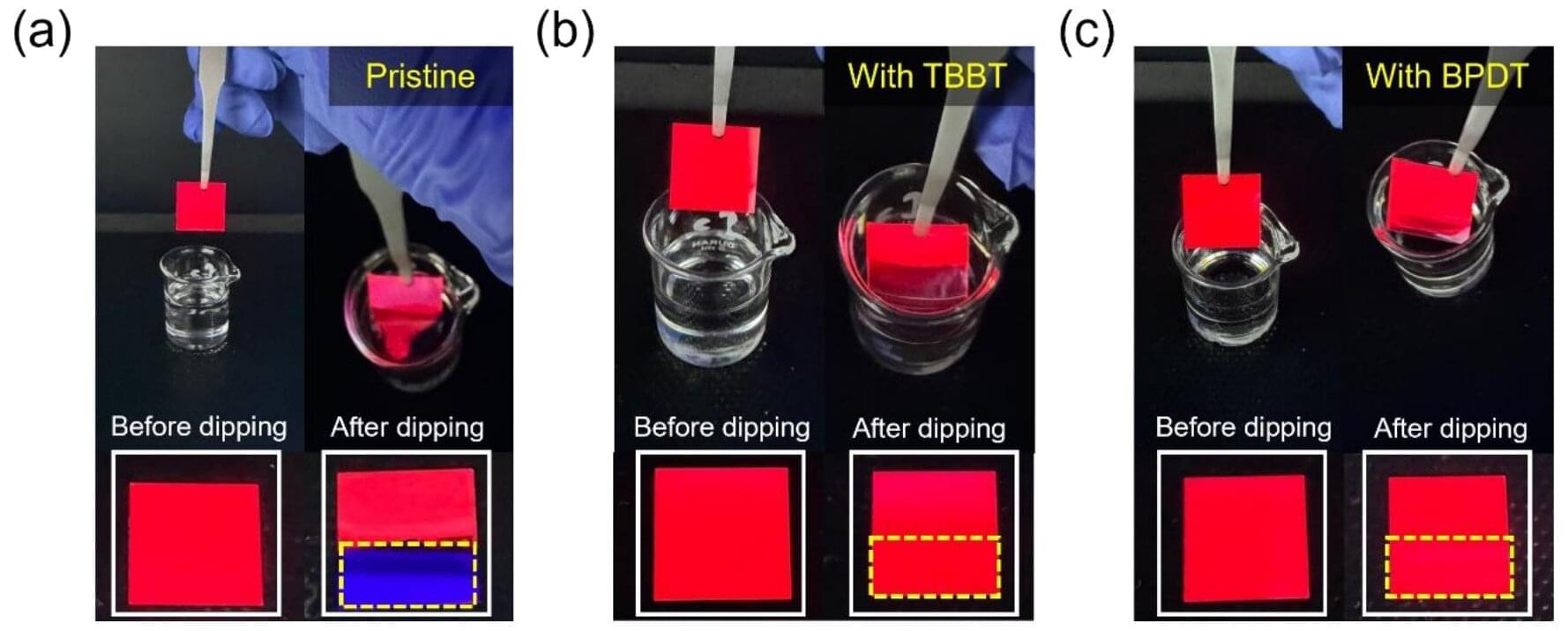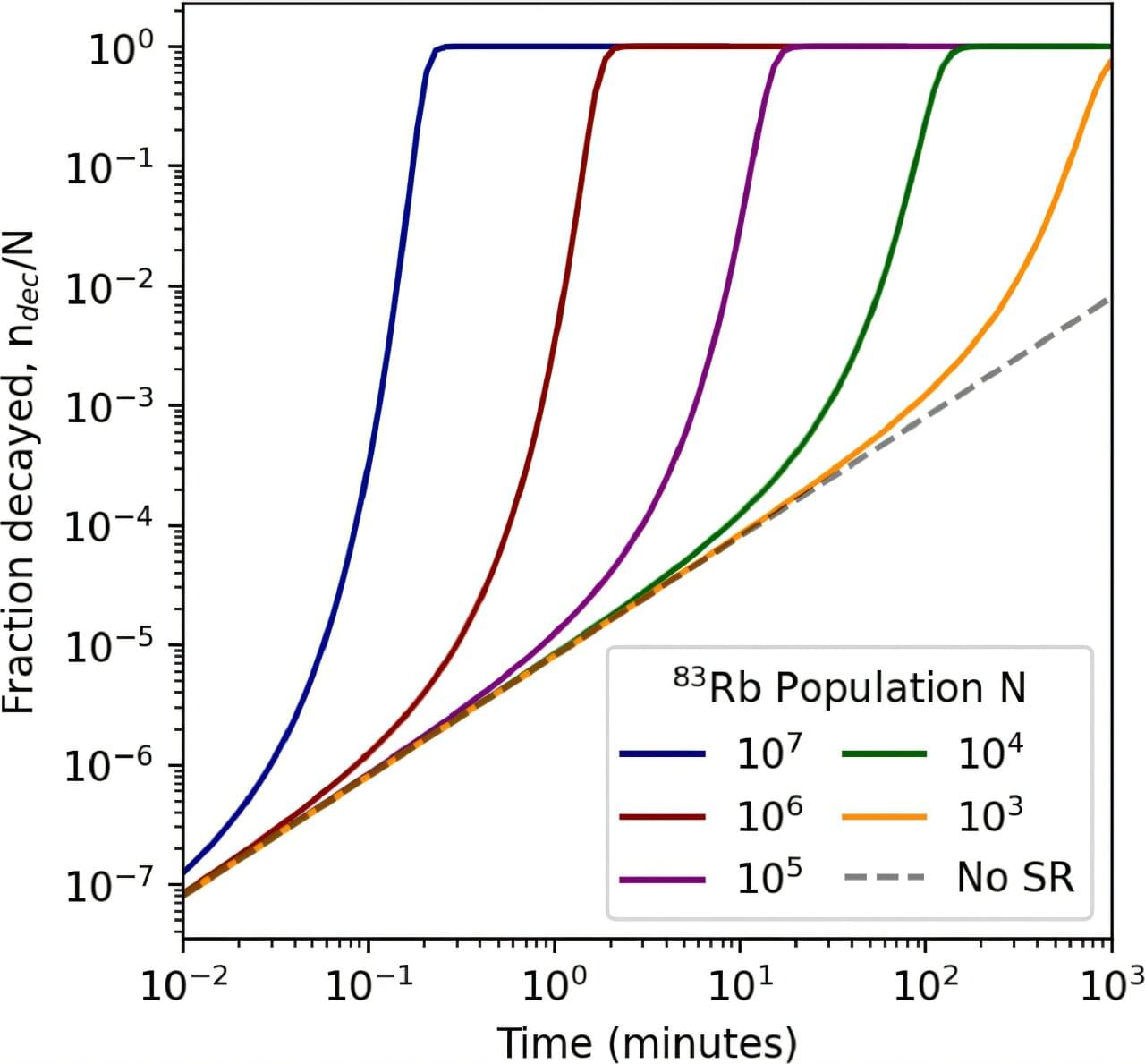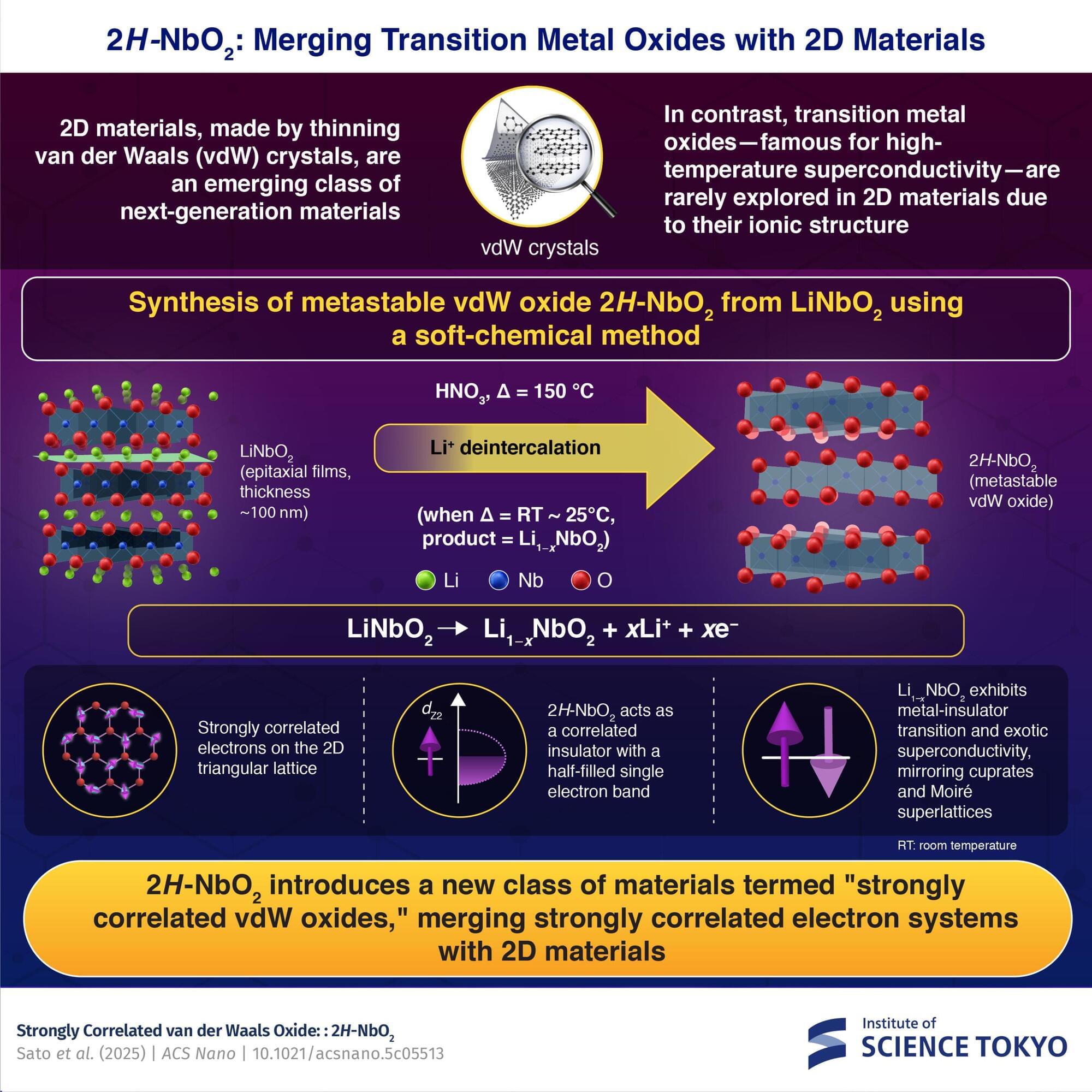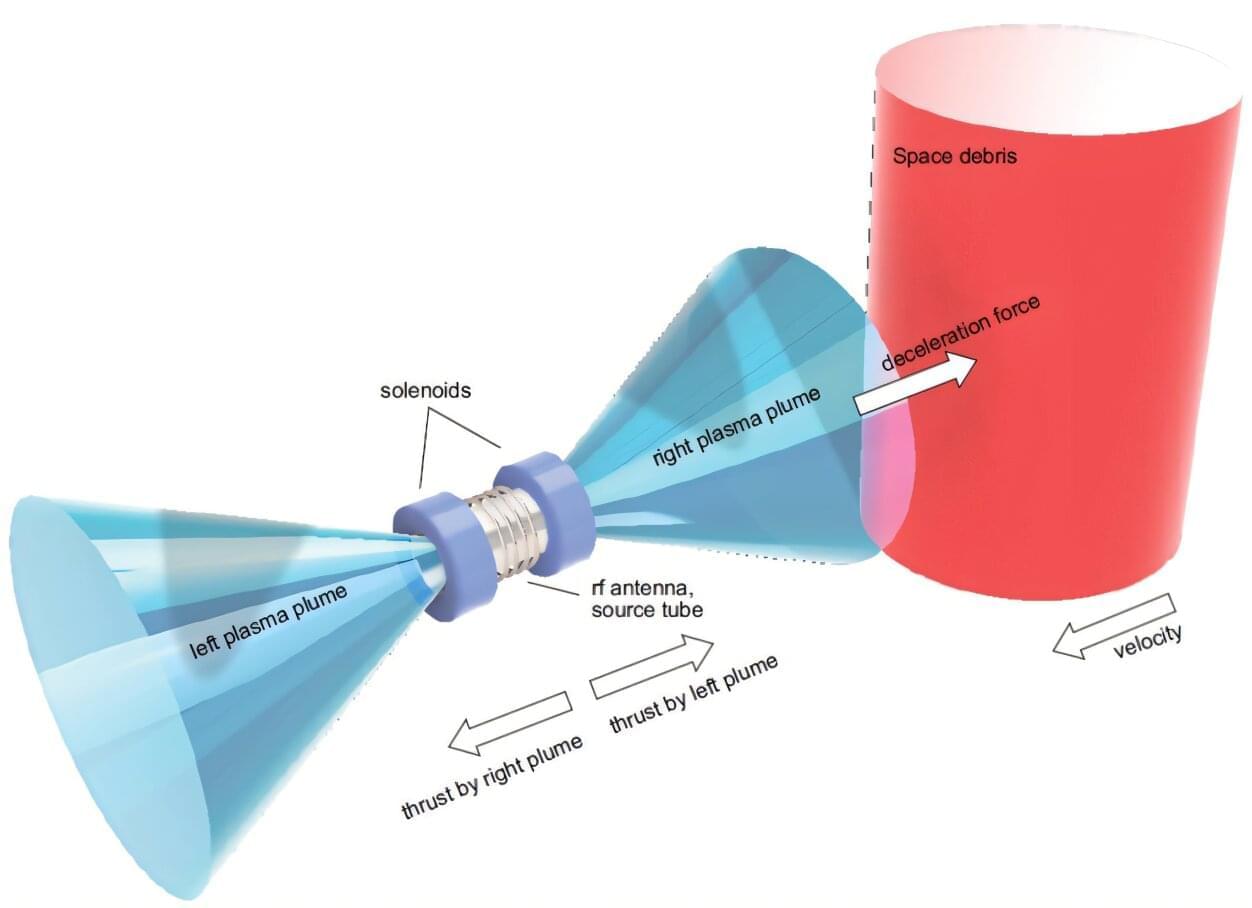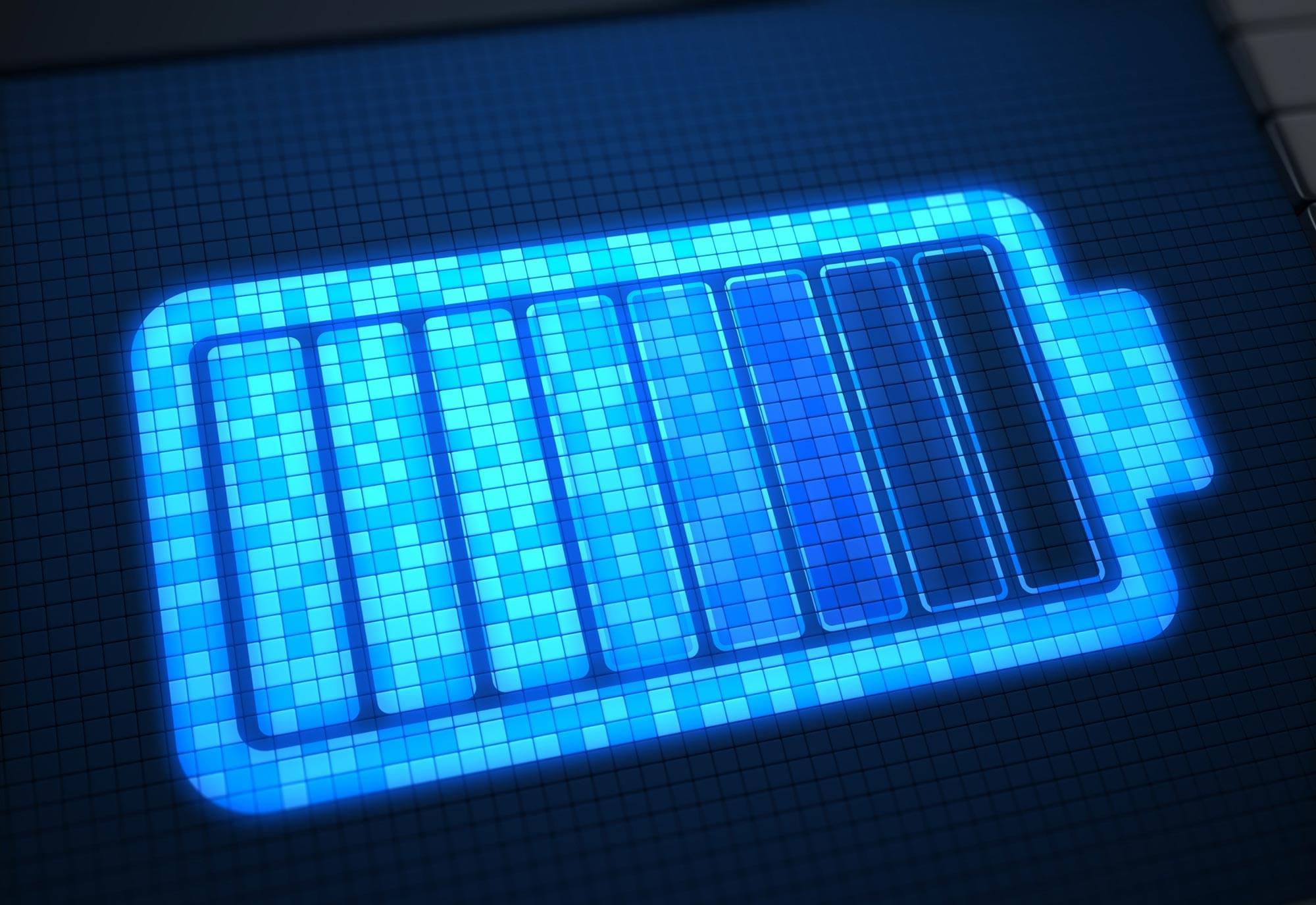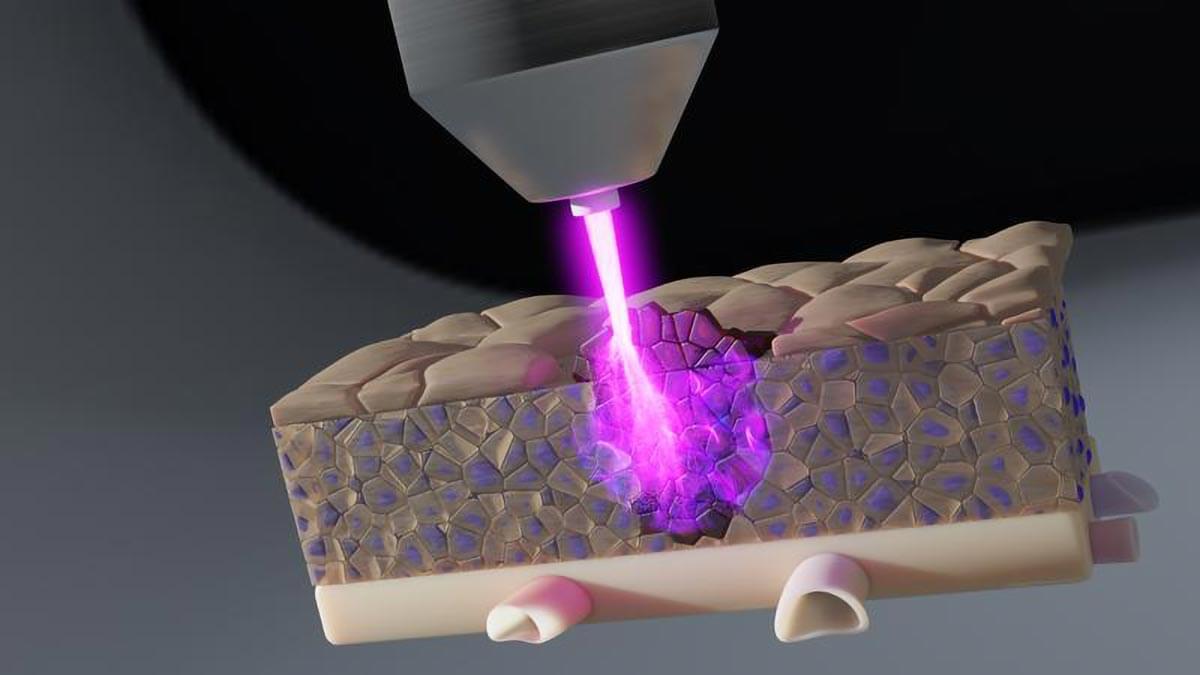A research team has developed a next-generation display core material with excellent stretchability and superior color reproduction. The team developed a high-performance color-conversion layer that is more flexible and vivid than conventional ones. This layer was successfully applied to the development of a stretchable micro-LED display, drawing significant attention.
The paper is published in the journal Advanced Materials. The team was led by Professor Jiwoong Yang in the Department of Energy Science and Engineering at DGIST and included Professor Moonkee Choi and Professor Jongnam Park of UNIST and Professor Daehyeong Kim of Seoul National University.
Professor Yang’s team has recently developed, for the first time in the world, a new technology that enables the direct linkage of quantum dots, which are emerging as next-generation display materials, with stretchable polymers that can stretch like rubber.
